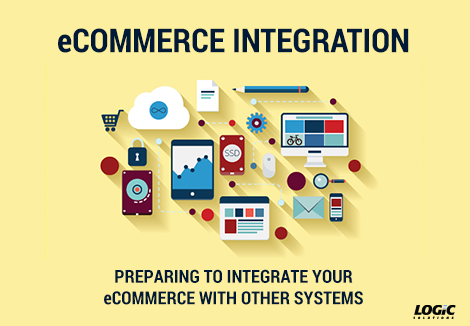Low-code development platforms can accelerate software development. But how can you guarantee these platforms are compatible with the APIs you require and don’t cause any additional problems?
Well, this blog provides a thorough guide for low code API development. You must read it till the end and resolve all your doubts!
The need for quicker, more effective solutions is constant in the ever-changing world of software development. Introducing low code solutions has been one of the most revolutionary recent breakthroughs.
These ground-breaking platforms have altered how we design, implement, and manage APIs by offering a potent toolkit that increases productivity and speeds up the development cycle.
Traditional development involves hand-coding, offering full flexibility but often taking longer and requiring more technical expertise. This is the reason enterprises are now moving towards low code platforms.
Low code development uses visual interfaces and pre-built components to streamline app creation, making it faster and more accessible, even for non-developers. It accelerates development but may have limitations for highly complex or customized projects.
According to sources, by 2030, the low-code development business is expected to produce $187 billion, and by 2024, low-code tools will be used for more than 65% of application development.
Therefore, low code API development can be the best solution if you don’t want to outsource or have in-house resources for creating internal APIs.
Today’s most efficient development method is using low code to build APIs. It offers you the flexibility you need to customize your app while providing a 3X improvement over traditional programming.
In this blog post, we’ll examine the low code API development and discuss how it’s changing enterprises to create and manage APIs, ultimately raising productivity and efficiency to new heights.
To avoid confusion, let’s start with the basics and comprehend the requirements for API development.
What is API Development and Why is it Needed?
An API, or application programming interface, is a set of established guidelines that permits various apps to speak with one another. Businesses can make their application data and functionality available to external third-party developers, business partners, and internal divisions inside their organizations by using it as an intermediary layer that handles data transfers across systems.
API development involves creating, designing, and maintaining Application Programming Interfaces. These interfaces define the rules and protocols enabling one software application to interact with another, dictating how requests and responses should be structured.
At its core, an API functions as a contract between two software entities. It defines the methods and data formats that applications can use to communicate. Front end developers use APIs to enable different software components, whether they are running on the same device or distributed across the internet, to work together cohesively.
API development is crucial because:
- It allows different software systems to work together seamlessly.
- It encourages independent module creation, easing maintenance.
- It will enable applications to run on diverse platforms and devices.
- It fosters a vibrant developer ecosystem and drives tech innovation.
- It permits the easy addition of new features as businesses grow.
- It provides controlled data access and robust authentication.
- Understanding Low Code API Development
Understanding Low Code API Development
Low code API Development is a method that simplifies and accelerates the process of creating Application Programming Interfaces (APIs) using low code platforms. These platforms offer visual, user-friendly interfaces with drag-and-drop components, reducing the need for extensive coding.
Read a detailed guide on low code front end development.
By changing the visual elements in the graphical user interface of a low-code API integration tool, users can designate the functionality they wish. Without a low-code development tool, an experienced developer would have been required to write the underlying software that interprets the user’s visual layouts and implements the API integrations. This software would have to know about all the necessary API integrations.
Low code API integration empowers professional and dedicated developers to design, build, and deploy APIs quickly, making them accessible to a broader audience. It streamlines API creation, promotes reusability, and fosters collaboration, making it an efficient approach for rapidly responding to integration needs, connecting systems, and enhancing digital connectivity in an organization’s software ecosystem.
Benefits of Low Code API Integration
Low-code API development offers a powerful solution for organizations seeking to expedite development, reduce costs, enhance collaboration, and stay competitive in a rapidly evolving digital landscape. Here, we’ll delve into the various benefits of low code API development in detail:
-
Accessibility
No-code and low-code platforms enable all business users to build useful APIs to support their company’s innovation and financial success, regardless of their technical proficiency.
-
Simplified Development
Low-code platforms abstract complex coding tasks, making it possible for dedicated software developers to create applications quickly. This simplification streamlines the development process and enable various team members to participate in building applications.
-
Pre-Built Connectors
Many low-code platforms have pre-built connectors and templates for popular APIs, databases, and services. These connectors simplify the integration process, reducing the time and effort required to establish connections with external systems.
-
Better Agility
No-code and low-code platforms offer businesses greater agility and scalability due to their simplicity of usage and accessibility. The development of the software and applications that enterprises require is no longer entirely dependent on developers; business professionals can speed up API development.
-
Enhanced Productivity
One of the biggest benefits of low code API development is increased productivity. Out of low code vs traditional development, API creation is quick and effective with low code platforms. Moreover, with reduced development and deployment timelines, organizations can achieve faster project time-to-value.
Low Code API Integration: Best Practices
Low code API integration can significantly streamline the process of connecting and utilizing external services and data in your applications. To ensure a successful and efficient integration, consider these best practices:
1. Deeply Understand API
Start by thoroughly understanding the API you intend to integrate. Review its documentation, endpoints, authentication methods, and data structures. This knowledge is crucial for a smooth integration process.
2. Align with Business Strategy
Plan your integration strategy before you start API development. Set goals, define the scope, and plan the data flow in accordance with your business strategy. The tool will obviously fail if it can’t seamlessly interface with your company’s most essential and widely used APIs. As a result, develop a thorough design that specifies how the API will work with your application.
3. Secure Authentication
Choose a low-code platform that aligns with your integration needs. Ensure it offers the required API connectors and integration capabilities. Evaluate its scalability and support for your chosen APIs.
4. Data Mapping & Transformation
Ensure proper mapping and transformation of data between your application and the API. Use low-code tools to format and transform data as needed to fit your application’s data model.
5. Documentation & Version Control
Maintain comprehensive documentation of your integration, including API configurations and data mappings. Consider version control for your integration workflows and components to manage changes effectively.
6. Consider Re-use and Scalability
Consider re-use and scalability in low code API integration to prevent the need for extensive rework and enable your applications to adapt swiftly to evolving requirements. Re-use allows you to leverage existing integration components and configurations, reducing redundancy and saving time. Scalability ensures that your integrations can handle increased data volumes and user traffic as your application expands.
Top 5 Low Code API Builder Tools in 2024
Low-code API development platforms empower organizations to build and integrate APIs with ease, reducing the complexity of traditional coding while accelerating the development process. Let’s explore the top 5 low-code API builder tools that are transforming how applications are created and integrated.
1. Microsoft Power Apps
Microsoft Power Apps provides a visual interface for building applications and connecting to various data sources and APIs. With Power Apps, Front end and back end developers can easily create custom APIs, define data models, and integrate external services, all within a user-friendly environment. Its integration with Azure services ensures scalability and security, making it a top choice for low code API development.
2. Filestack
Filestack is a low-code API platform that simplifies the integration of file upload, transformation, and management capabilities into web and mobile applications. It offers a range of APIs and tools to handle file-related tasks, including uploading, storage, conversion, and delivery. With Filestack, dedicated developers can quickly add these features to their applications without the need for extensive custom coding, saving time and effort in development.
3. Meta API
Based on the Open API Standard, Meta API offers a solid low code API development platform to integrate and automate your business activities. All required APIs are accessible via Meta API. Meta API plays a vital part in data compatibility in addition to automation. By acting as a “magic key,” it enables companies to adapt data to fit their unique set of operating requirements.
4. Salesforce
Salesforce Lightning Platform is a low-code platform tailored for CRM and business application development. It includes powerful API creation and integration tools, allowing a front-end development team to connect seamlessly to external services and data sources. Salesforce’s extensive ecosystem of pre-built connectors and AppExchange apps further simplifies API integration.
5. Mendix
Mendix is another leading low-code platform that excels in API development and integration. It provides a visual, model-driven environment for building APIs and connecting to external data sources. Mendix offers a wide range of pre-built connectors and templates, making integrating with various APIs, including cloud services, databases, and IoT devices more accessible.
Low Code API Development: Overcoming Challenges
Low-code API development can be a powerful tool when applied thoughtfully, but it also comes with some challenges. It is essential to resolve these challenges proactively to ensure the success of your integration projects.
Here are some common challenges and solutions based on our two decades of experience in web development industry:
-
Limited Customization and Flexibility
Challenge: Low-code platforms may limit customization options for complex API integrations.
Solution: Choose a low-code platform that offers extensibility through custom code or plugins when needed, allowing you to address specific integration requirements.
-
API Complexity and Variety
Challenge: Dealing with complex APIs or a wide range of APIs from different providers can be challenging.
Solution: Invest time in understanding API documentation thoroughly and choose a low-code platform that provides a variety of pre-built connectors for popular APIs to simplify integration.
-
Security Concerns
Challenge: Ensuring data security transmitted through APIs is critical but may require specialized knowledge.
Solution: Low-code development typically offer built-in security features, but you must still follow best practices. Involve security experts in your project and regularly update API keys and tokens.
-
Scalability Issues
Challenge: APIs must handle growing data volumes and user traffic.
Solution: Design your integration to be scalable from the start. Use features provided by the low-code platform to manage increased demand effectively.
-
Documentation and Knowledge Transfer
Challenge: Maintaining proper documentation and transferring knowledge among team members can become challenging as projects grow.
Solution: Establish documentation practices from the beginning and promote knowledge sharing among team members. Use version control for your integration workflows and configurations.
Low Code API Development: Real World Scenario
Low-code API development allows you to create applications and integrate APIs with minimal manual coding quickly. The examples below demonstrate the versatility and applicability of low code API integration across various industries and use cases.
 |
A sales team can use a low-code platform to integrate a CRM system’s API into their B2B portals. This integration can automate lead capture, contact updates, and sales data retrieval. |
 |
An e-commerce portal can utilize a low-code platform to connect with various payment gateways, shipping APIs, and inventory management systems. This ensures seamless order processing and inventory synchronization. |
Healthcare Data Integration |
In the healthcare industry, low code platforms can be used to integrate electronic health record (EHR) systems, patient management databases, and billing APIs into patient portals. Thus allowing healthcare providers to access patient data efficiently. |
Logistics and Transportation |
Web application development companies can build apps that integrate with GPS and mapping APIs to track shipments, optimize routes, and provide real-time delivery status updates to customers. |
Financial Services Integration |
Financial institutions can streamline their operations by integrating with banking APIs, payment processors, and fraud detection services using low-code platforms, ensuring secure and efficient financial transactions. |
Leverage The Power of Low-Code Solutions For API-Centric Development
In today’s fast-paced digital landscape, businesses need to adapt quickly to dynamic market demands and stay competitive. One way to achieve this agility is through low code API development. Low code platform empowers organizations to build and integrate APIs with ease, reducing the complexity of traditional coding while accelerating the development process.
eLuminous Technologies offers low code digital solutions to help your company prioritize cross-departmental collaboration, boost end-to-end visibility, enable cost-effective application development, simplify data structures, and match strategies with long-term organizational goals.
With API-centric capabilities, drag-and-drop builders, visual process builders, responsive online interfaces, robust data reporting tools, and much more, we selected the finest minimal code platform.
Let’s discuss if you want to profit from the numerous benefits of low-code technology for API-centric development.
Project Delivery Head
Nitin has over 20 years of IT experience and 3+ years of experience in on-site work in Arizona, USA. In all these years, he has held the positions of delivery manager, module lead, and senior consultant. Expert in advocating product life cycle phases while using self-motivational skills and problem-solving abilities. He works on the principle of “Always Deliver More than Expected.”















